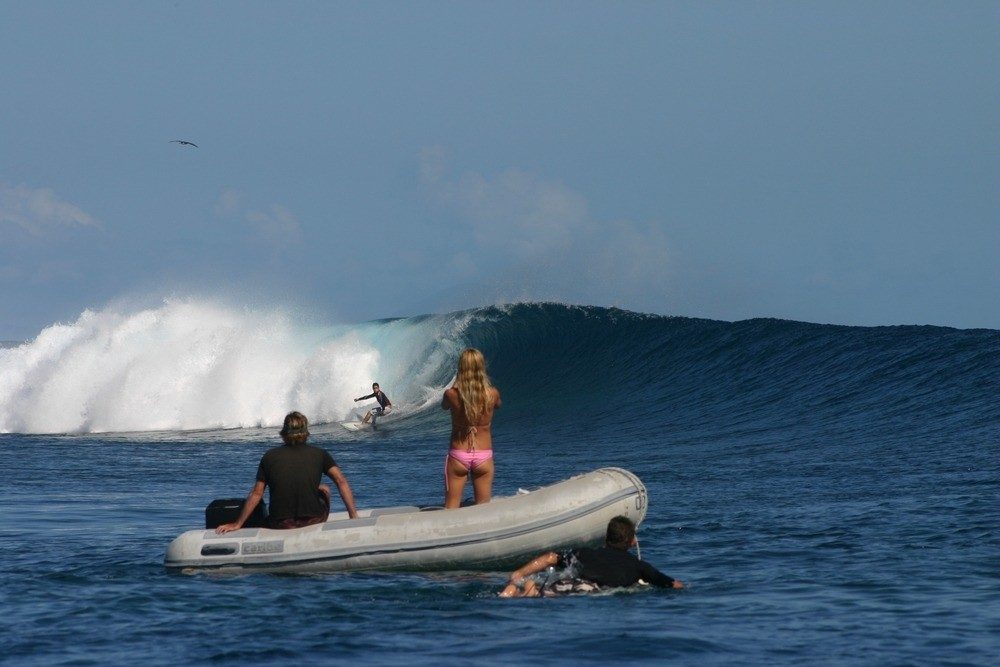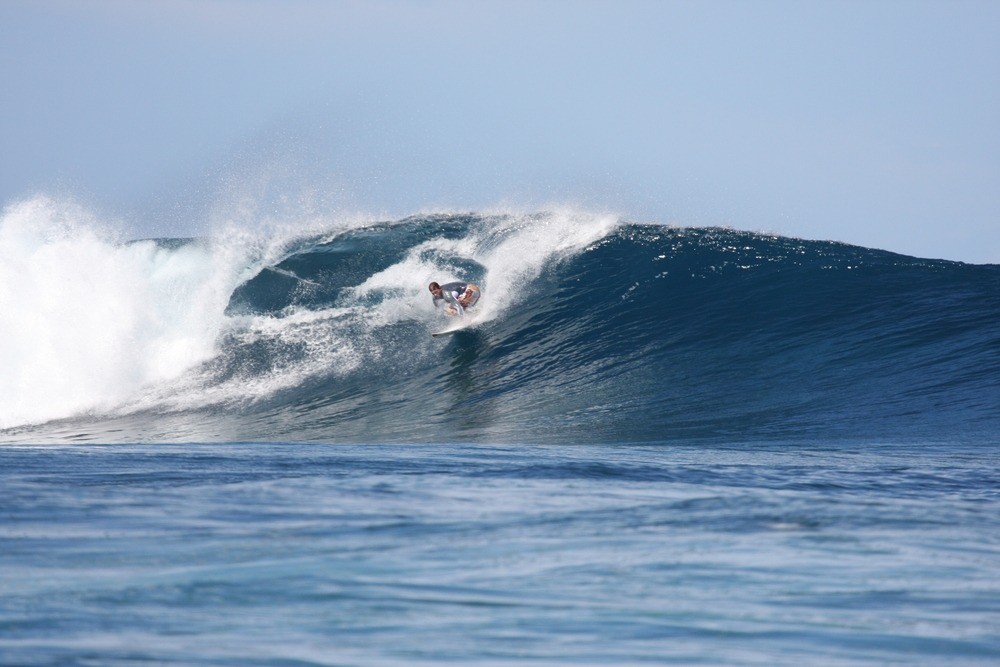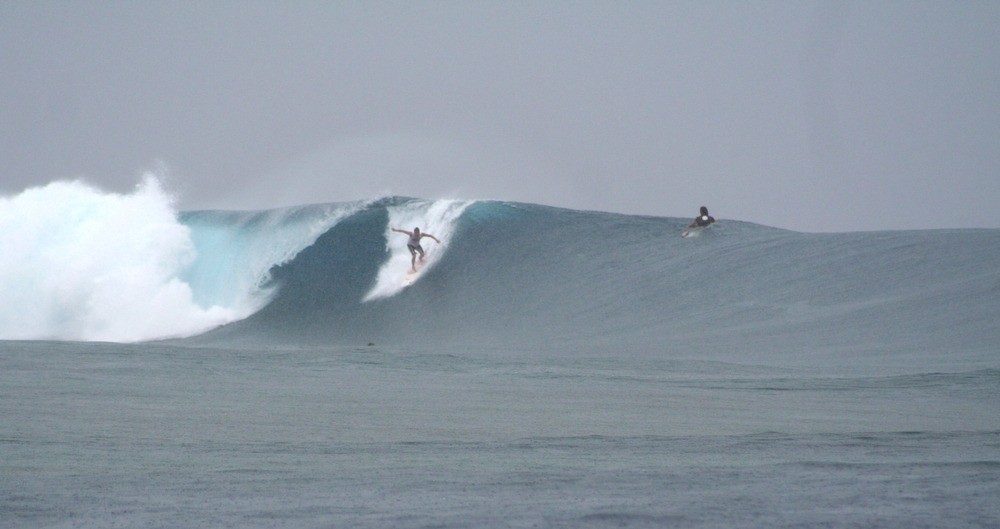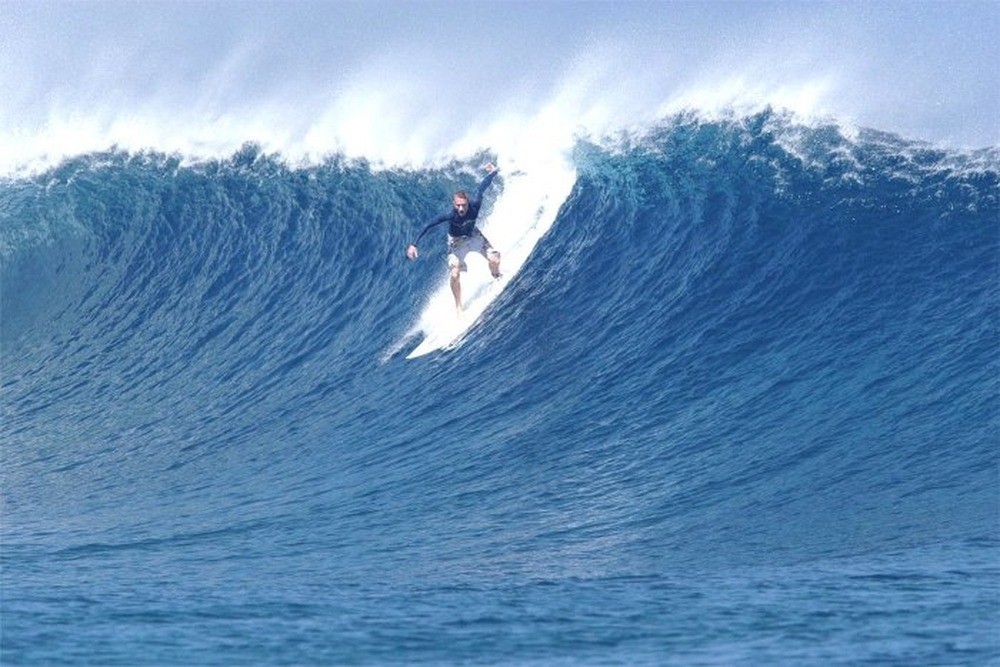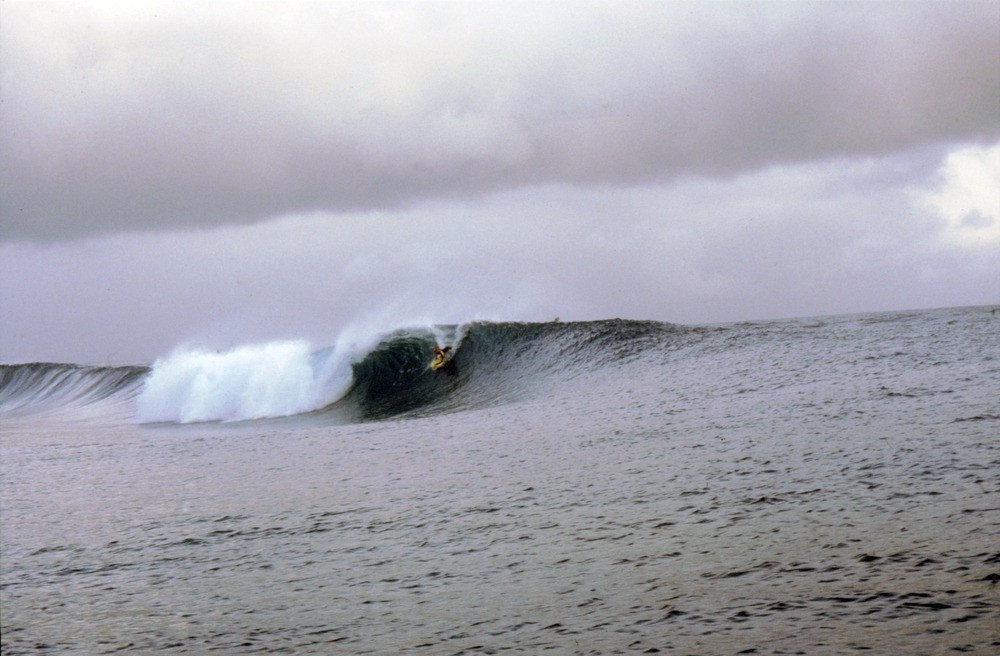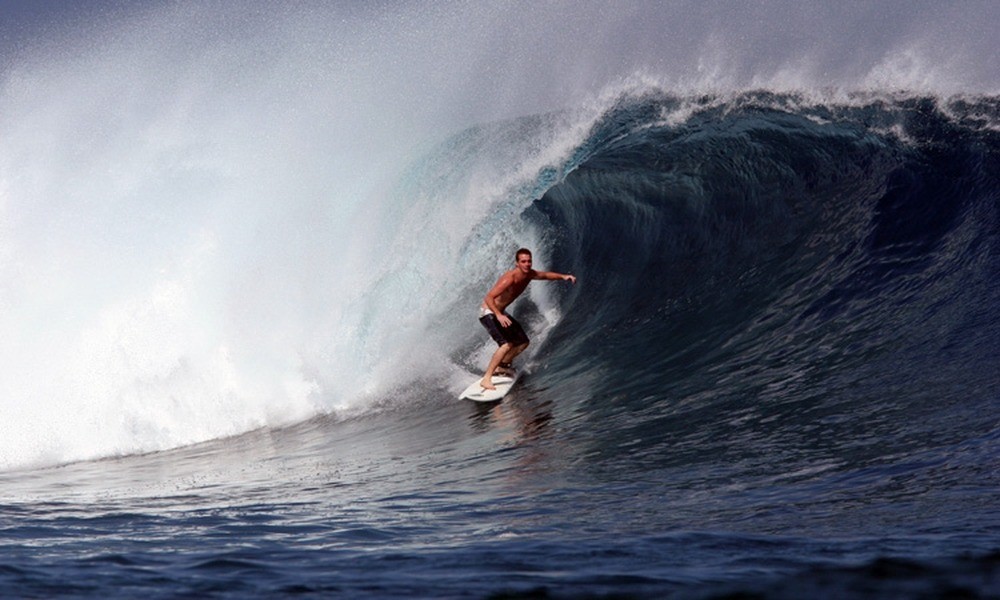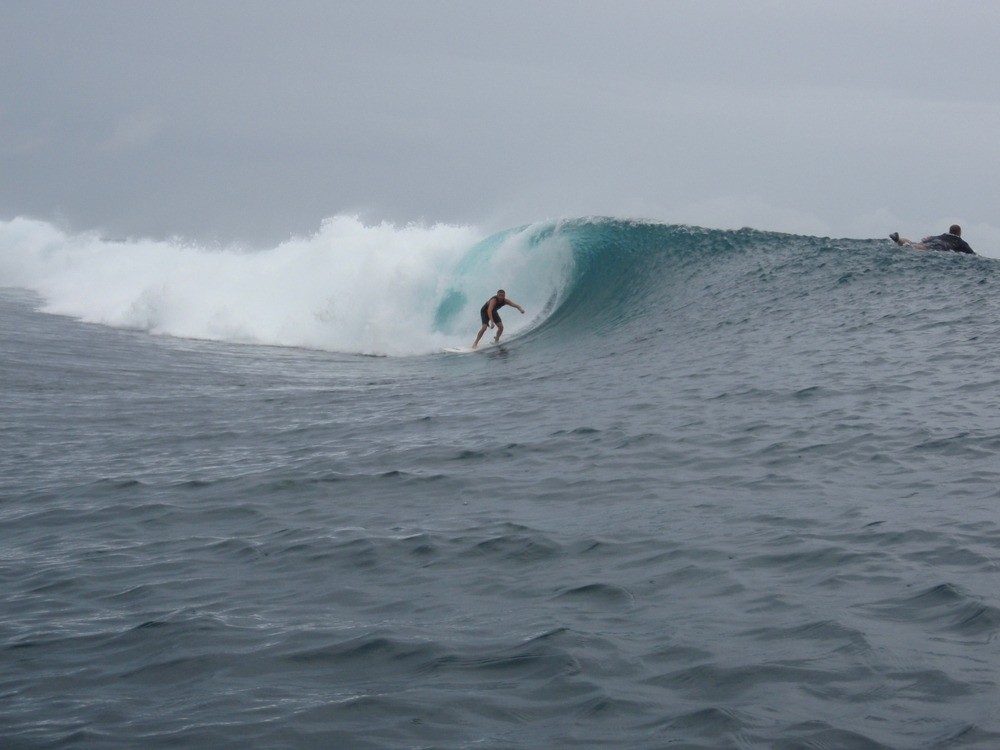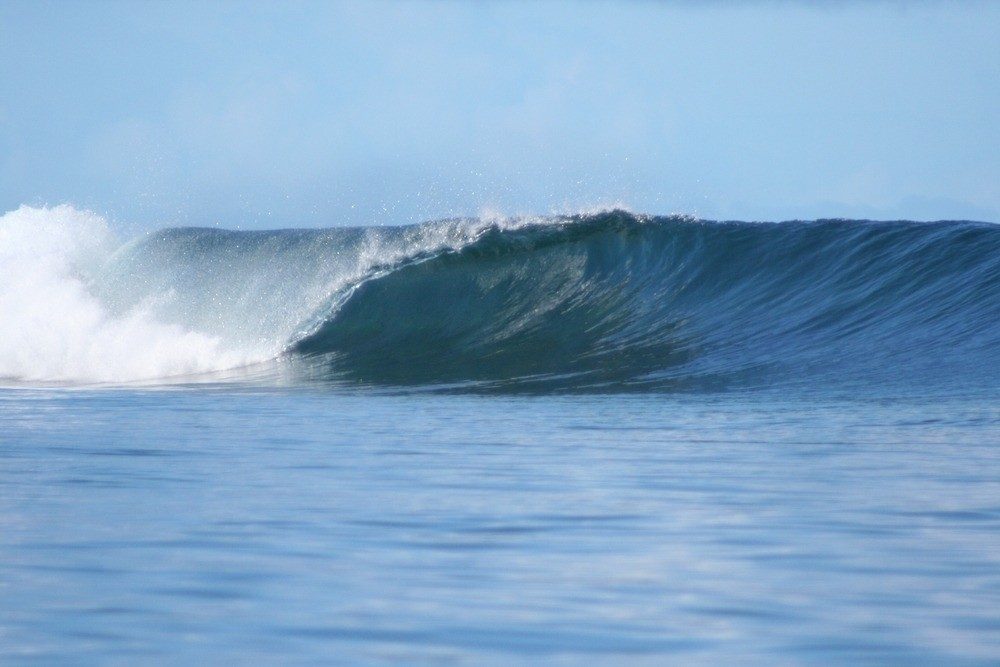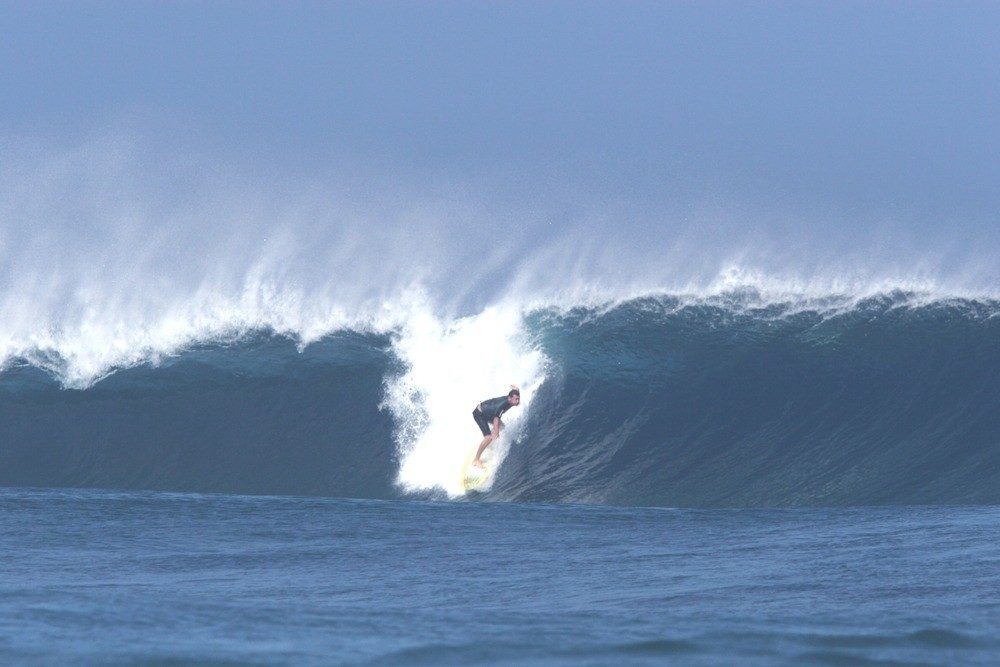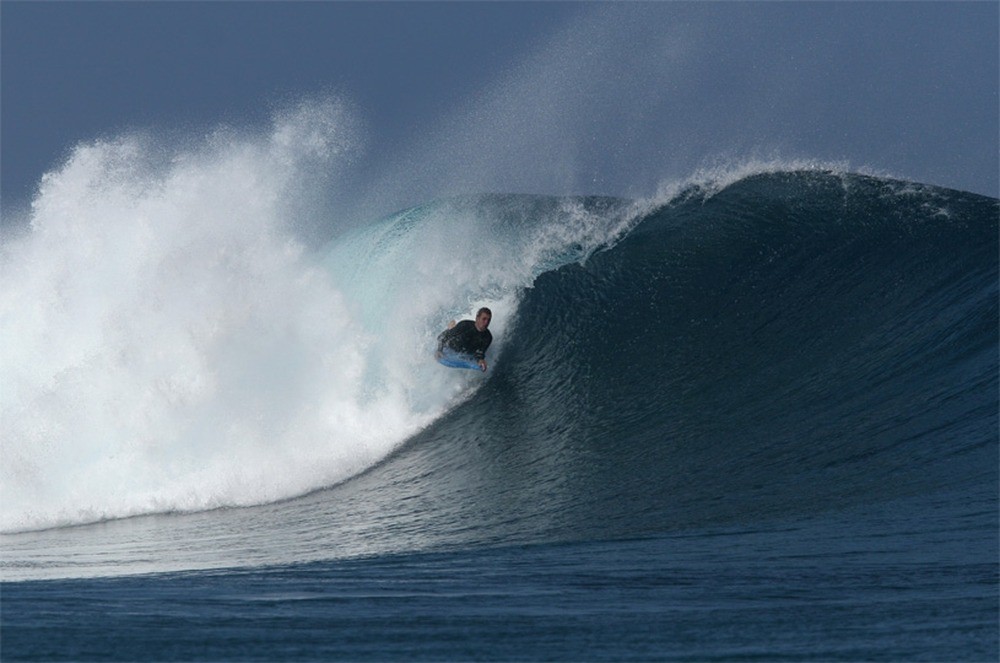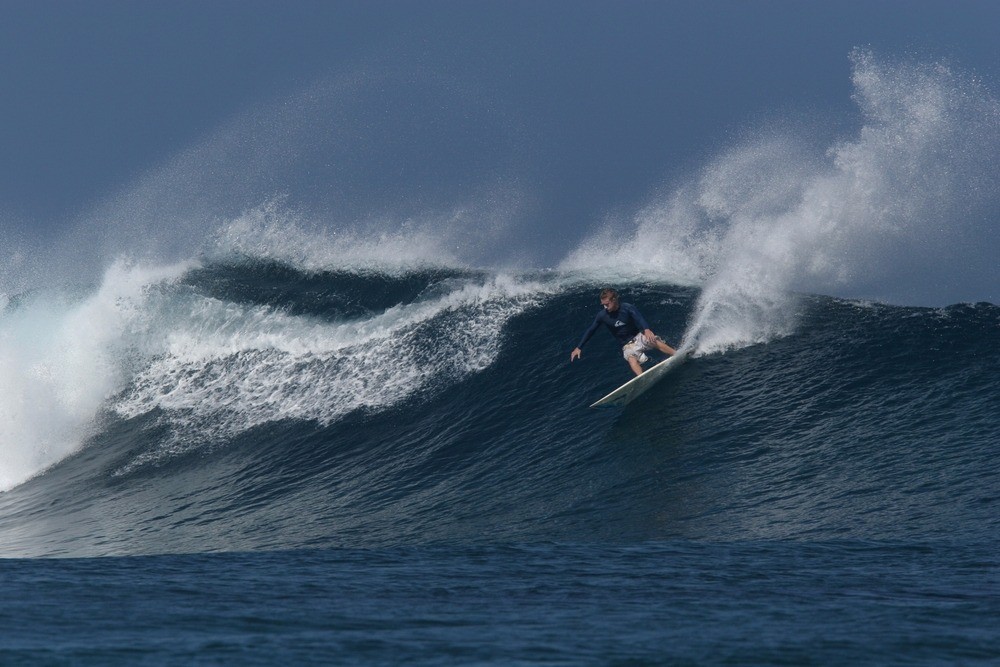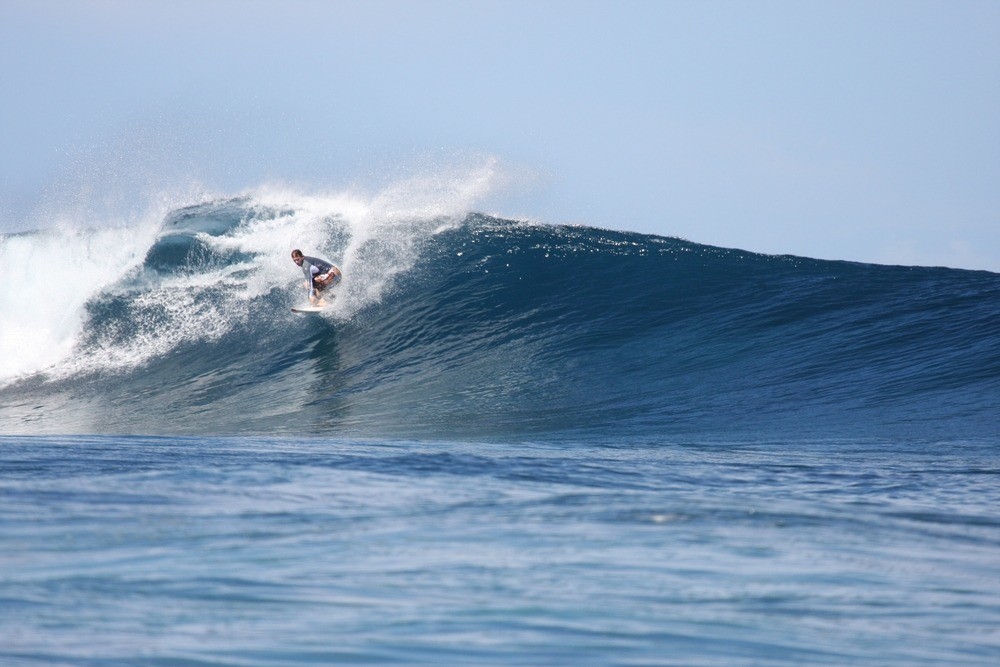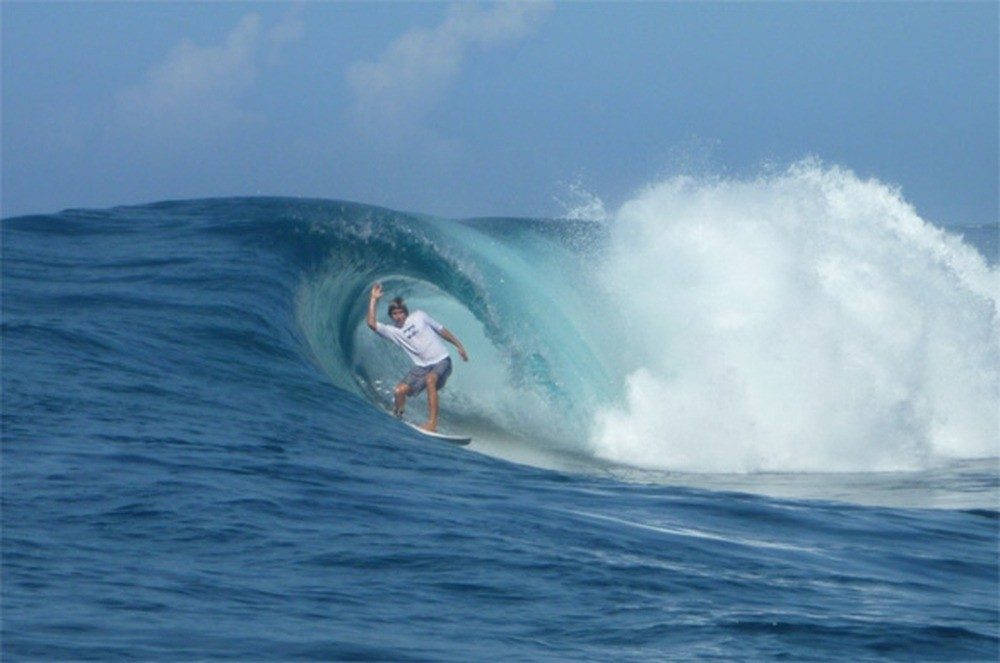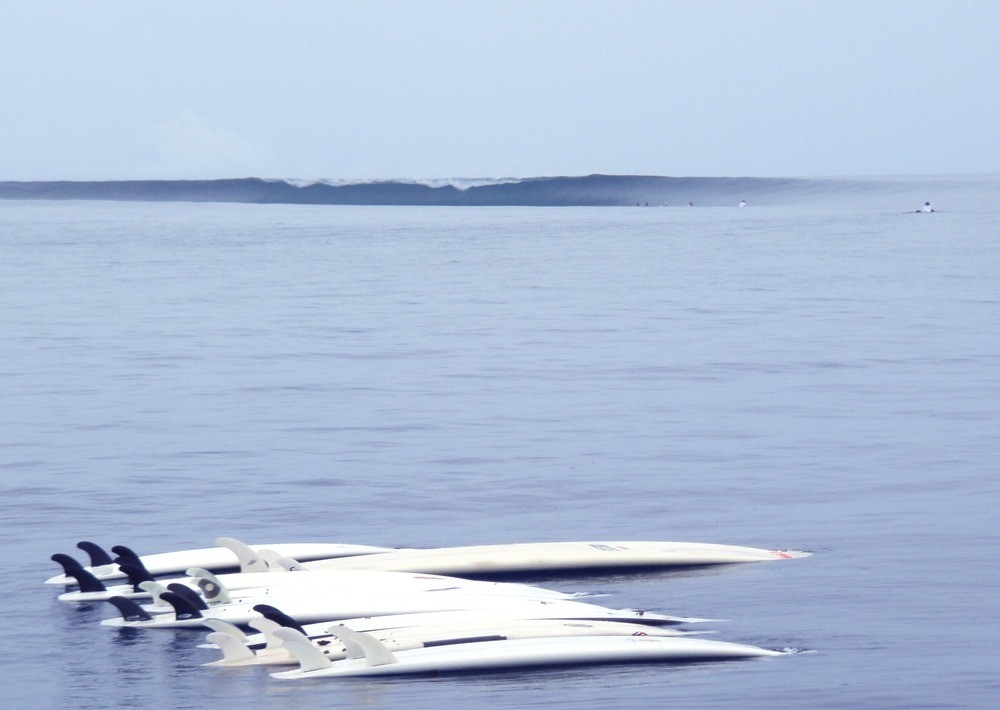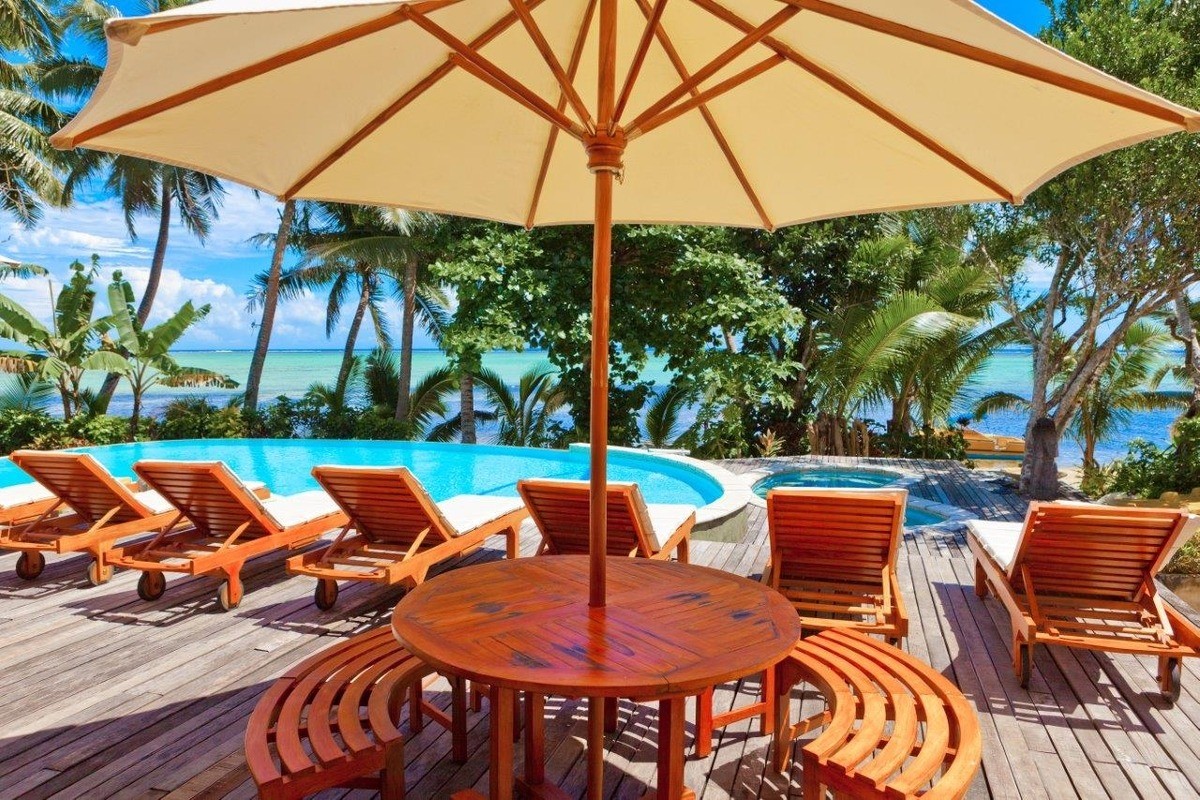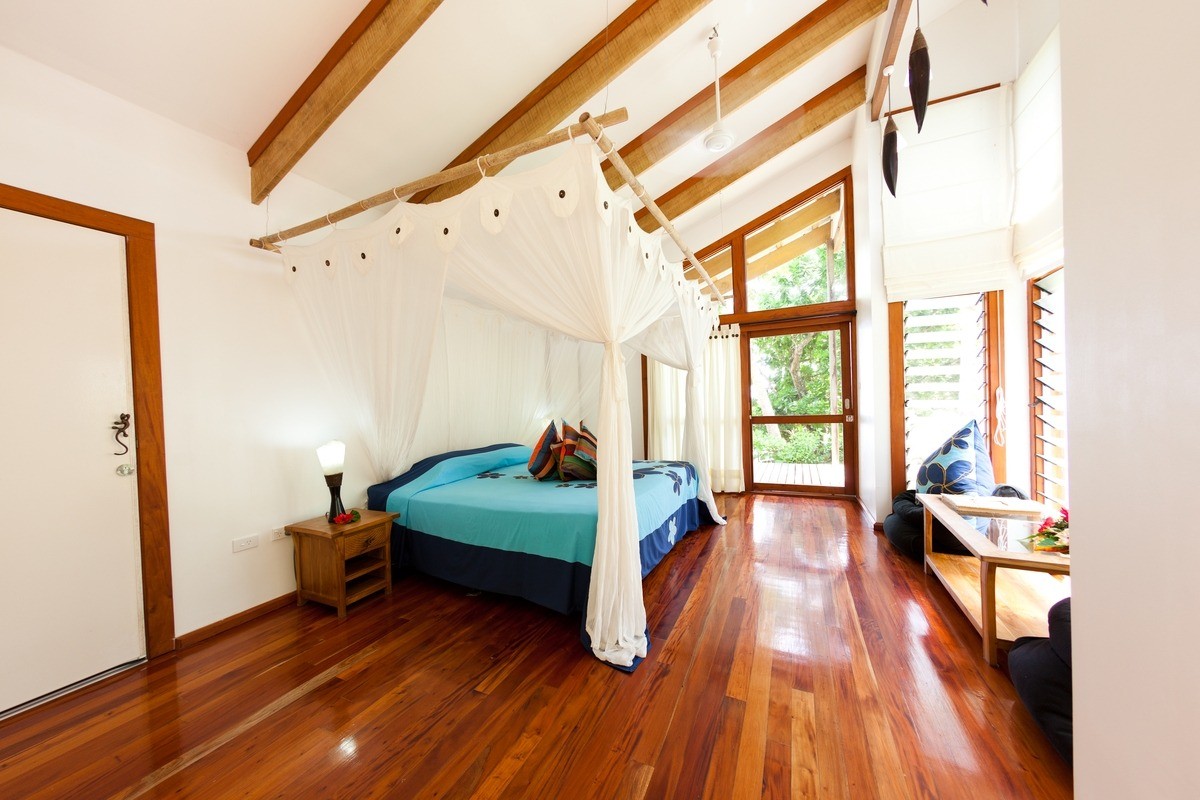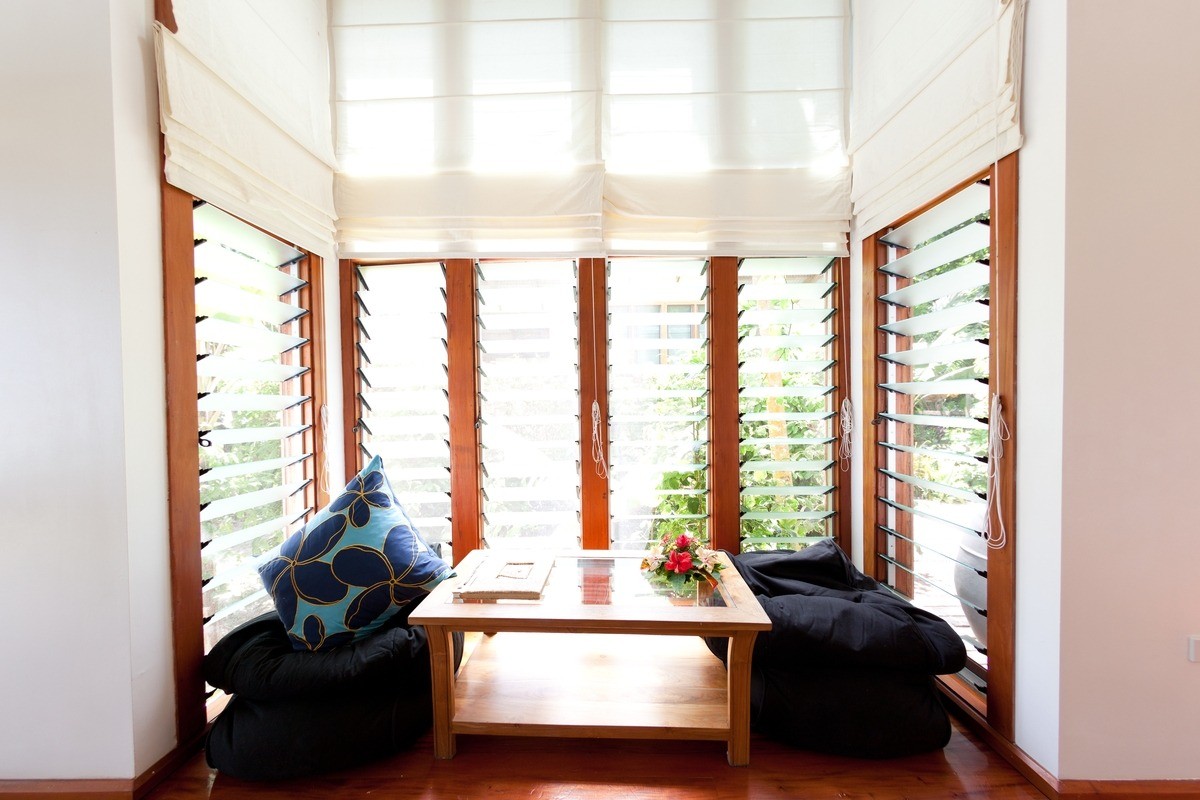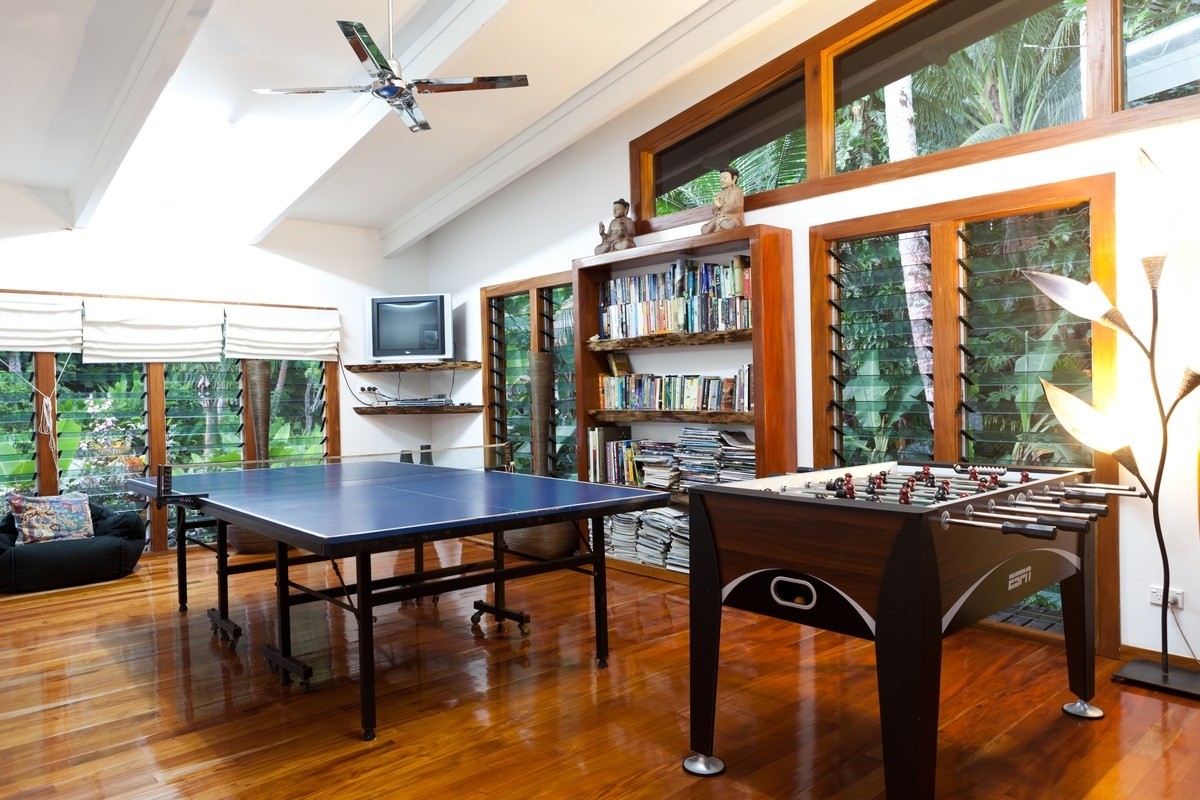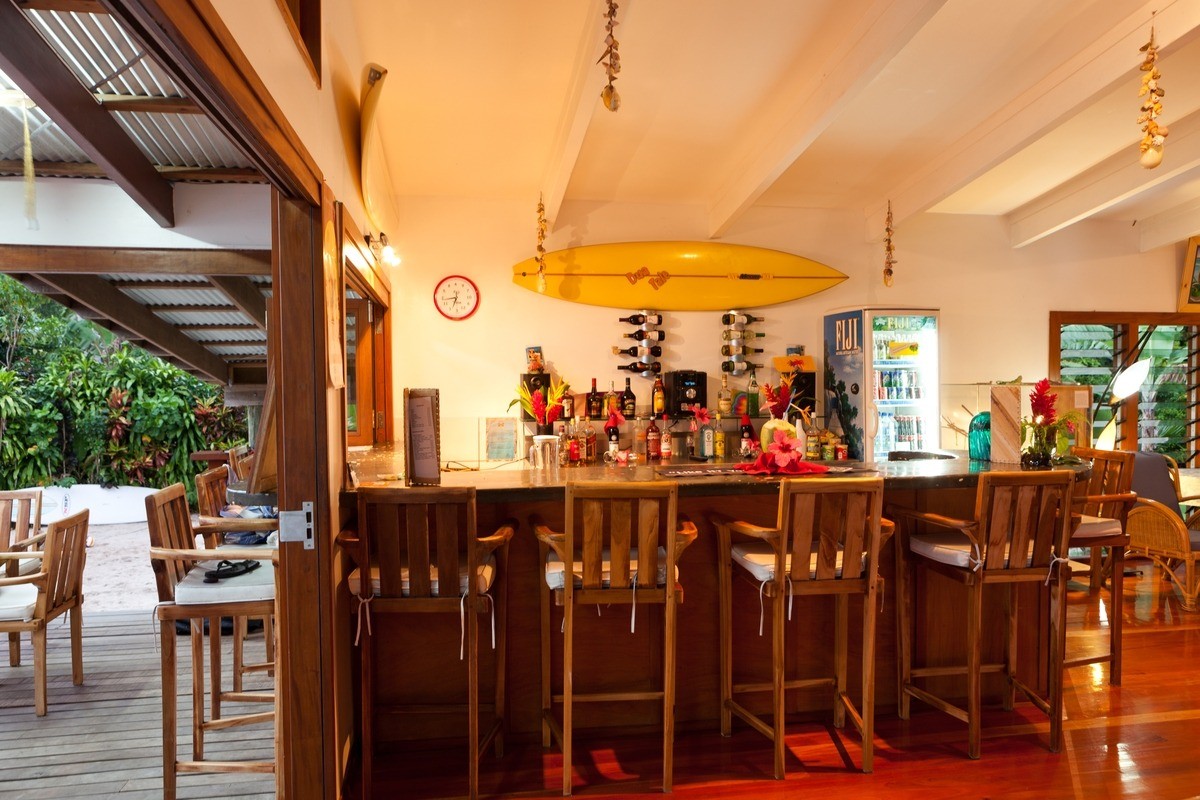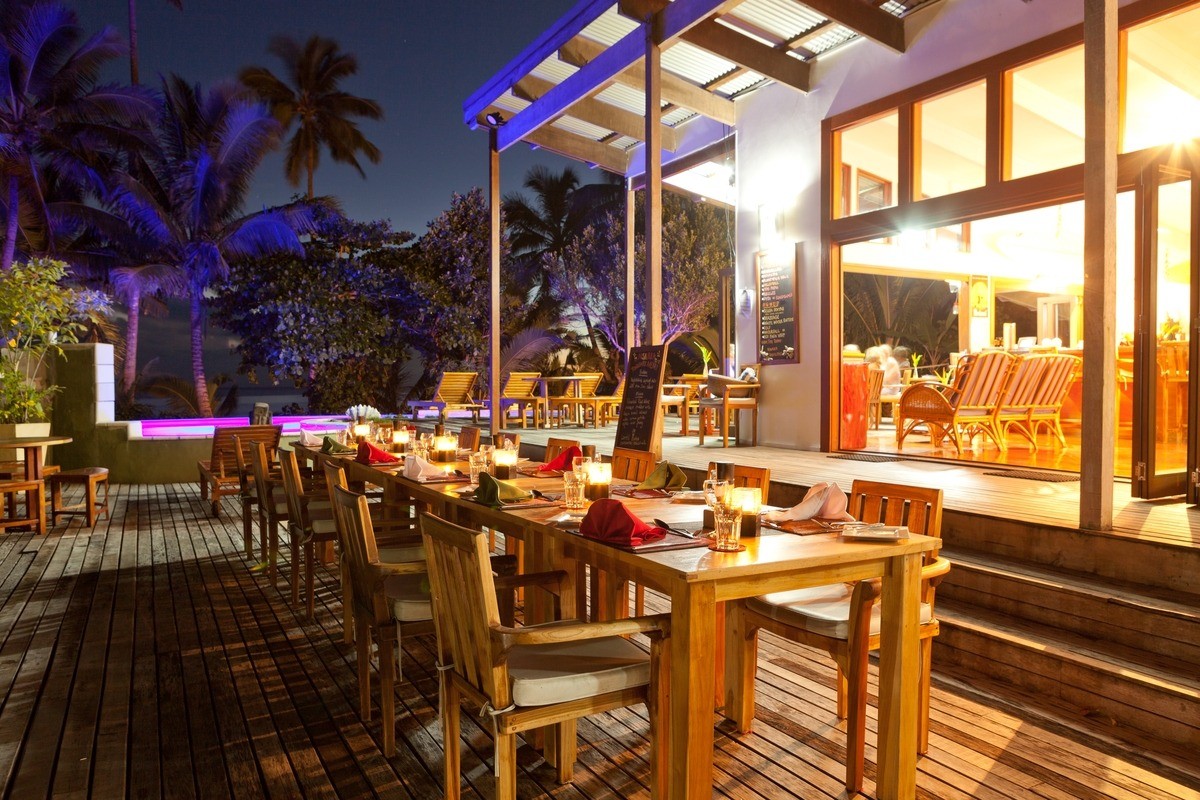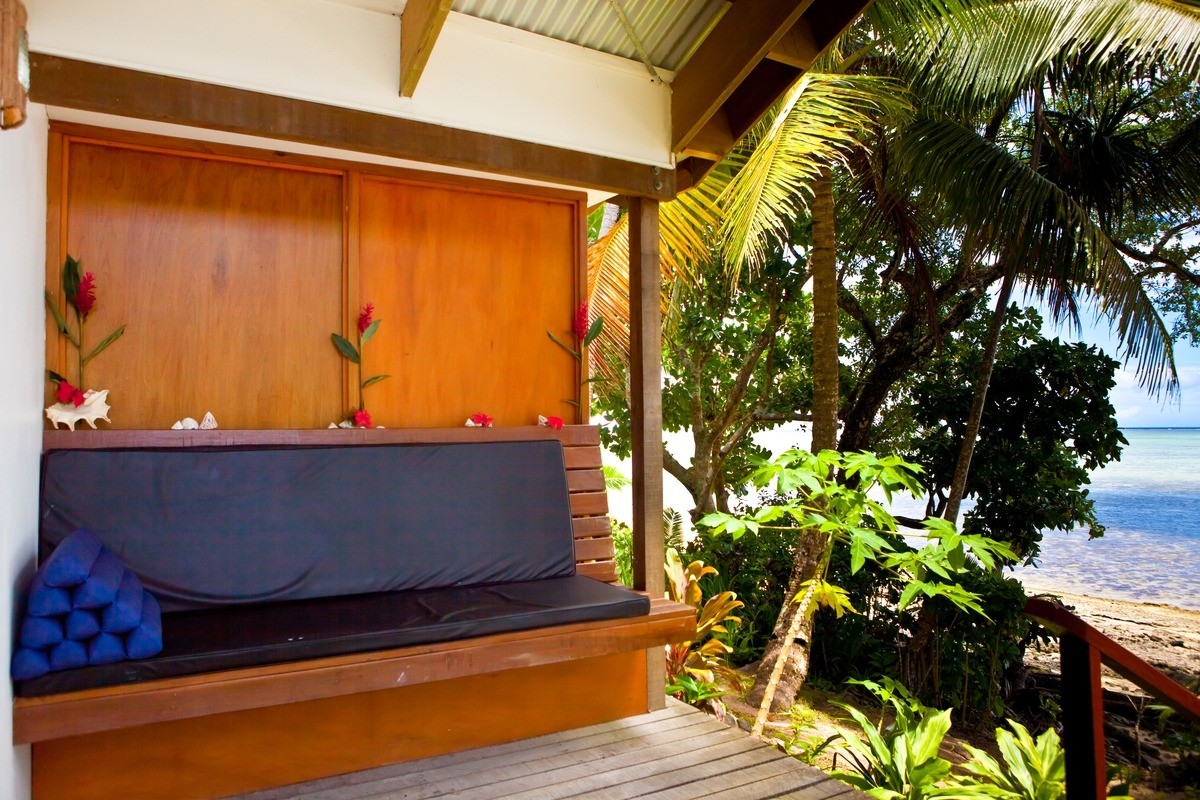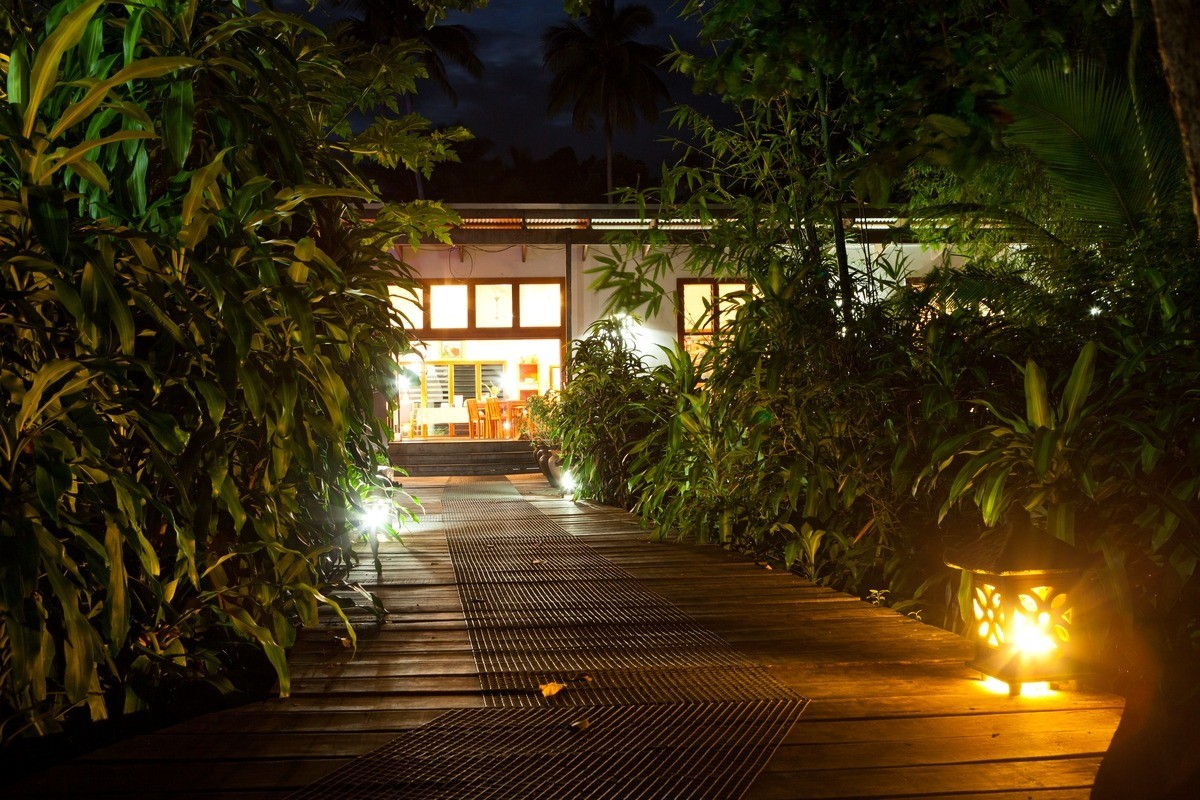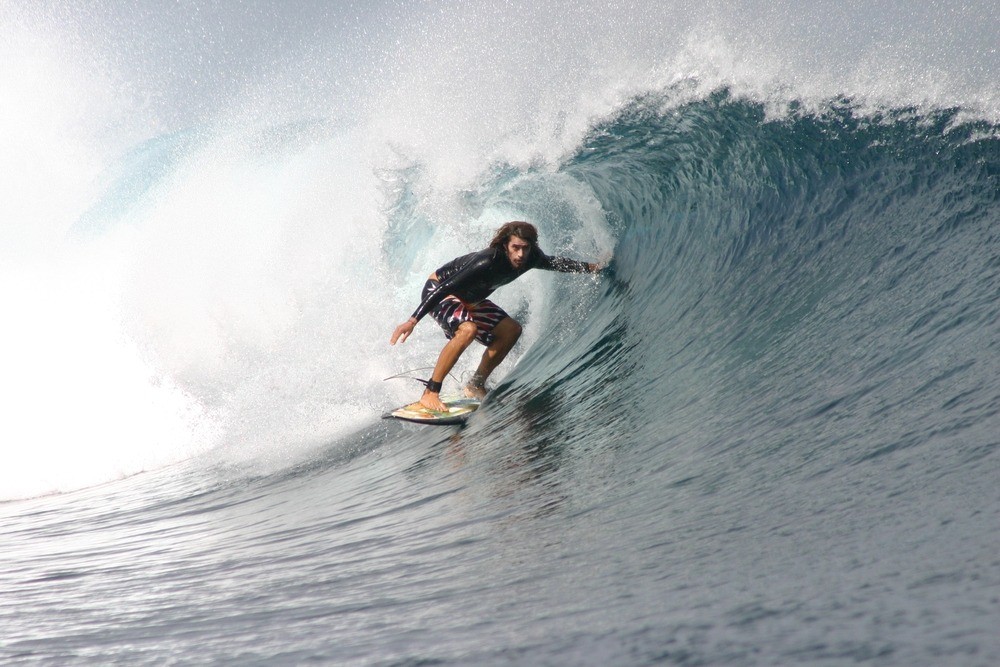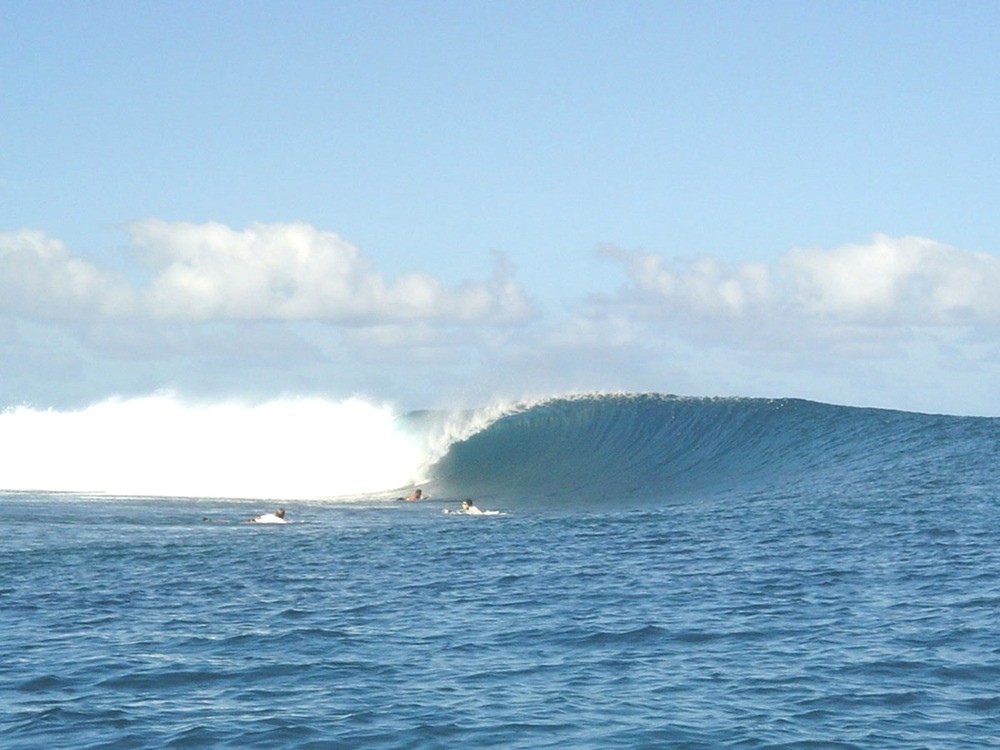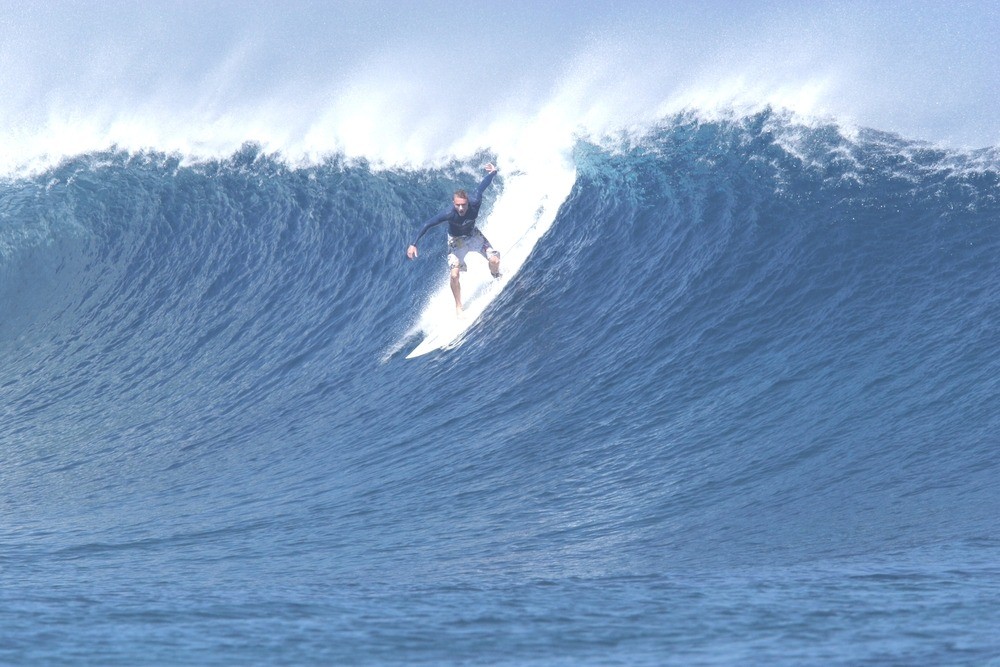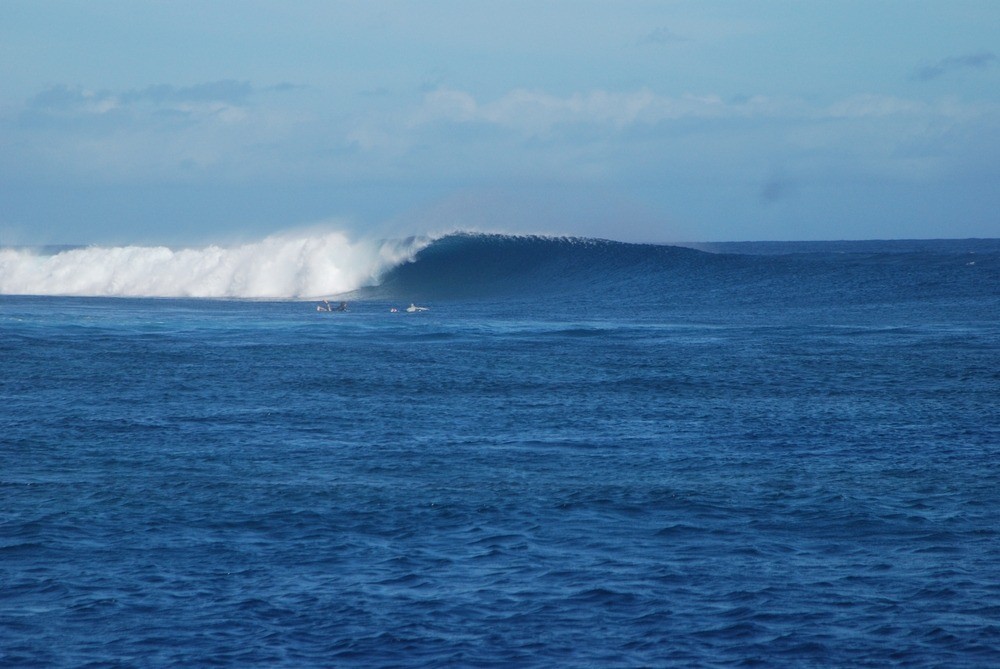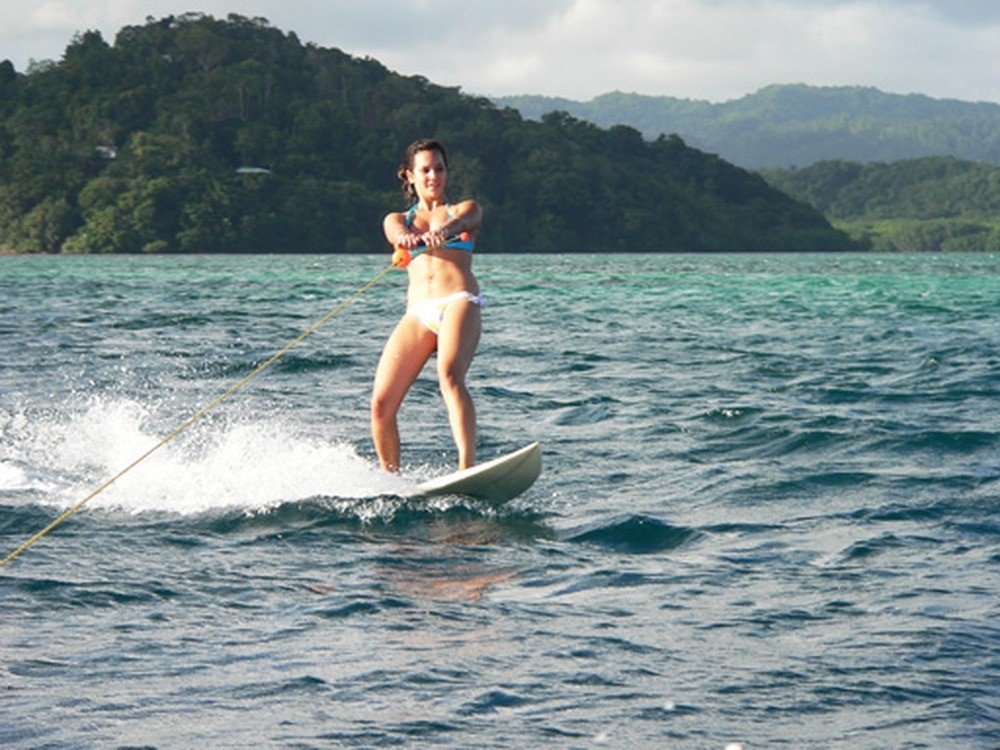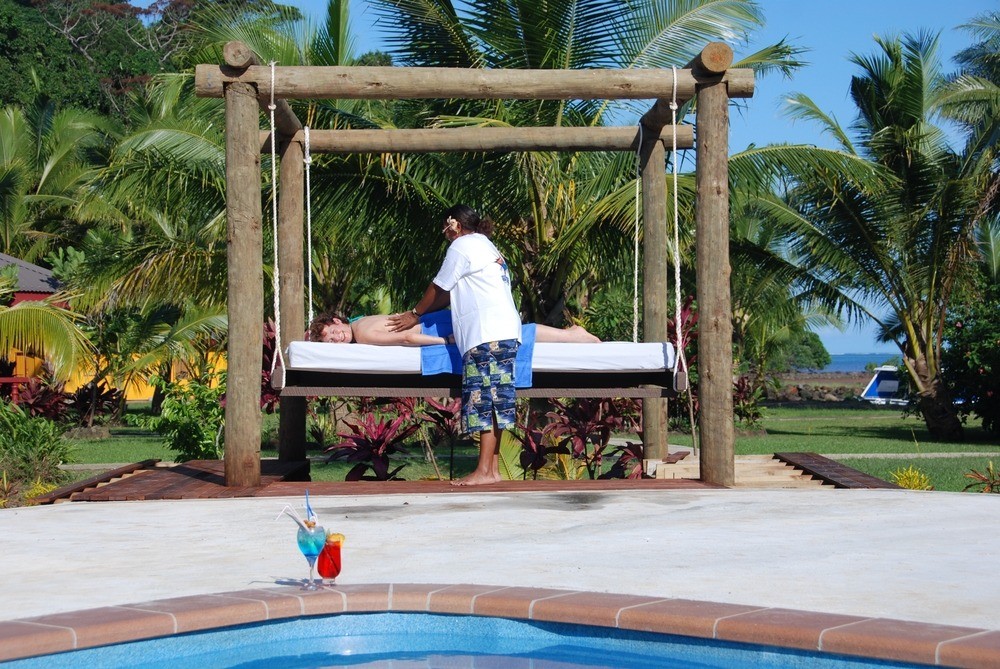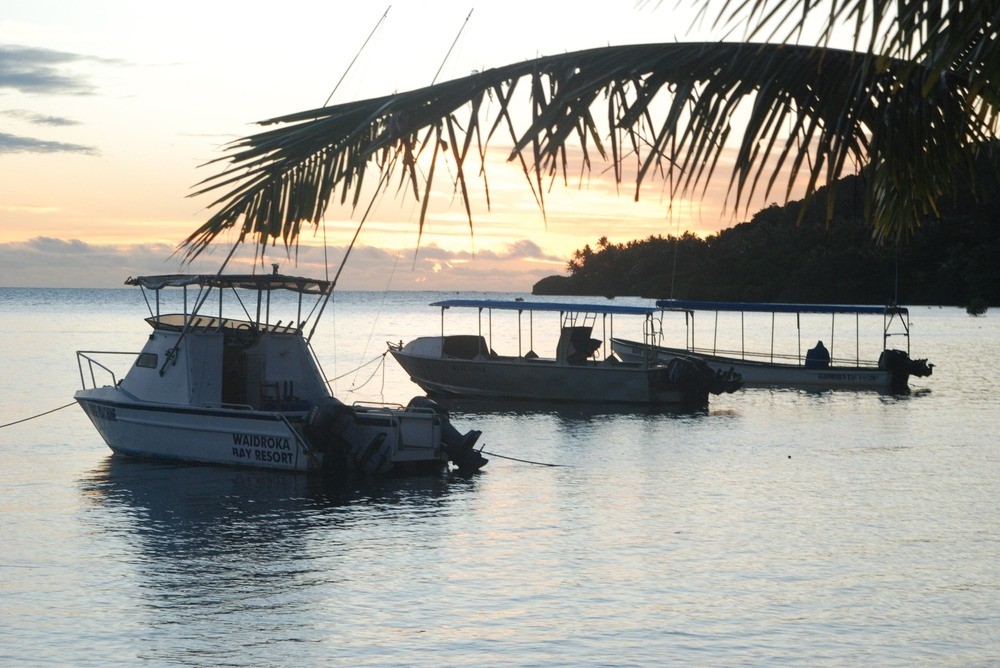Matanivusi Surf Resort
Fiji
Overview
Matanivusi Surf Resort is an eco-friendly enclave built specifically to accommodate surfers and family members that are looking for secluded accommodation and challenging waves breaking in crystal clear waters.
The Coral Coast of Fiji is the south coast of the main island of Viti Levu, between the Sigatoka River mouth and Suva. Popular with tourists from around the world, the Coral Coast is about 60 miles of coves and isolated jungle with pristine beaches protected by barrier reefs that are anywhere from a quarter mile to a mile wide. The reef pass at the entrance to Vunaniu village has a series of right reefs that Australians Brian and Donna McDonald came across around the turn of the century.
With permission from village elders, the McDonalds were allowed to create an eco-friendly surf resort along a stretch of beach about three kilometers from Vunaniu. The resort was built in harmony with the natural terrain and water supply to build 6 duplex bures. Each bure has two king size beds with mosquito nets, comfortable chairs, en suite bathrooms and ceiling fans. The windows are fitted with louvers and glass allowing guests to regulate how much sea breeze flows in and heat flows out.
Unique Accommodations
Accommodations
The accommodation at Matanivsui was designed by award winning Gold Coast architect, Paul Uhlmann and staffed by villagers from nearby Vunaniu village.
Matanivusi has 6 duplex ocean front bures (12 rooms) with a small creek behind them and a screen of coconut palms and jungle flowers for additional privacy.
The rooms are tastefully furnished with a king size bed (or two king singles), mosquito net for that tropical feel, a coffee table and relaxing chairs. All rooms are screened. The large deck and vast expanses of glass gives each unit inspiring views of the beach and rainforest.
Wooden plank walkways connect the bures to a restaurant, bar and swimming pool. This elevated walkway keeps guests a few feet above the jungle floor as they wind through the resort to the water’s edge.
The resort has a small fresh-water swimming pool, and the equivalent of an enormous saltwater pool within the barrier reef. Snorkeling in front of the resort reveals an incredible display of tropical fish and corals that will entertain non-surfers for weeks.
The resort restaurant offers fresh, healthy meals to resupply energy after a day in the surf and sun.
Surfers at Matanivusi are ferried out to the barrier reefs in sturdy, twin-engine boats. It’s a 10-15 minute trip over crystal-clear water out to the reef breaks.
Surf & Seasons
The Surf
J’s is a fast, hollow right good from two to six feet. J’s prefers a high tide and winds from northeast to west. Best swell direction is from the west to make this right run the length of the reef.
Shifties is the outside point of the barrier reef, which means it picks up any energy moving through the ocean and is consistently bigger and more powerful than J’s or Vunaniu. The takeoff is in deep water which sets you up for a powerful, thick wave that can get hollow when the wind and tides are right. Shifties is surfable on all tides and it prefers a north wind.
Pipes is a hollow left reef surfable from three to eight feet.
When the surf gets really big, those who aren’t all that comfortable challenging eight to 8-10 foot barrels can find refuge at Vunaniu, a short wedging right with a bowl end section.
And then there is Frigate’s Pass, a left reef way off over the horizon, breaking on a partially submerged barrier reef. Frigate’s is 15 miles from the resort, and it breaks from 2 to 12 feet, at the northeast end of a pristine, 30-mile barrier reef that protects the island of Beqa.
A day trip to Frigate’s Pass is nothing to take lightly. The sun exposure is relentless and this is no place for engine trouble or injury. Matanivusi Resort ferries guests to the reef in a 22’ fiberglass Noosa Cat with twin 200hp outboard motors.
Season and Weather:
Peak: March – September
Good: November – February
Waves:
Average Shoulder high, up to Triple overhead
Winds:
Offshore 90% of the time
Air/Water Temp:
Air: 75º to 90º (day) • 70º to 75º (night)
Water: +68º to 90º (Tropical)
Area Breaks:
12+ quality breaks (fun for most skill levels)
Synopsis:
CLIMATE
The cooler dry season is from April through October and the warm, wetter and more humid season is from November to March. Air temperatures range from the mid 70’s to mid 80’s year round, with water temperatures hovering in the same range, year around.
Fiji does receive rain year round but the wet season also corresponds with the South Pacific cyclone Season. Although it is rare to have a cyclone impact Fiji directly in any given year, it can happen, and does typically every 5+ years for a short period (3-5 days) of very intense and very bad weather.
The Fiji islands also have dry and wet sides similar to Hawaii; drier on the west and south, much more rain on the east and north. The properties WaterWays has relationships with are all located on the southwest or southern end of the island chain.
WIND
As with most of the South Pacific, the seasonal “trade” winds blow from the southeast across the Fiji Islands June through September. These winds can blow relatively strong for 5-10 days at a time, and then often back down for a week before continuing the on and off cycle. These trade winds may not be favorable at many breaks, but each location with which we work has some “fall back” plan in the event of unfavorable conditions.
During the wet season winds blow from the north, which is offshore for most breaks along the south coast. The shoulder months of March through May and October through early November receive light and variable winds producing many glassy days.
SWELL
The south swell window is generally from March through November while North swells are biggest and most consistent from December through February.
South Pacific does receive southern hemisphere swells year around and it is very rare for Fiji to receive a north ground swell out of season.
To sum it up: If you’re looking for the biggest surf, March through November is the go. Surfers looking for the cleanest conditions and the least crowded time of the year should visit during wet season from December through February.
Many people prefer to travel during shoulder months of March, April, May and September, October, November, hoping to get glassy conditions with early or late south swells.
Activities
Activities
- Fishing
- Snorkeling
- SUP
- SCUBA
- Village Tours
- Waterfall Hikes
- Kayaking
- Volleyball
- River Rafting
If the boats aren’t being used for surfing, Matanivusi will take guests out on sunset cruises, to see all that jungle from the edge of the reef.
” You made our trip so much better! We would have been lost without ya’ll! Mmmm… good food. Good people. Good waves. Love this place! It will always be in my heart and soul.”
– JC
Pricing
2025 Rates
Package Details
- Nightly Accommodation
- Three meals per day.
- Local surf transfers.
- Use of snorkeling and fishing equipment.
- Water, tea, coffee.
Air Conditioning available for $35 Per Night Per room. Available in 4 Bures only.
